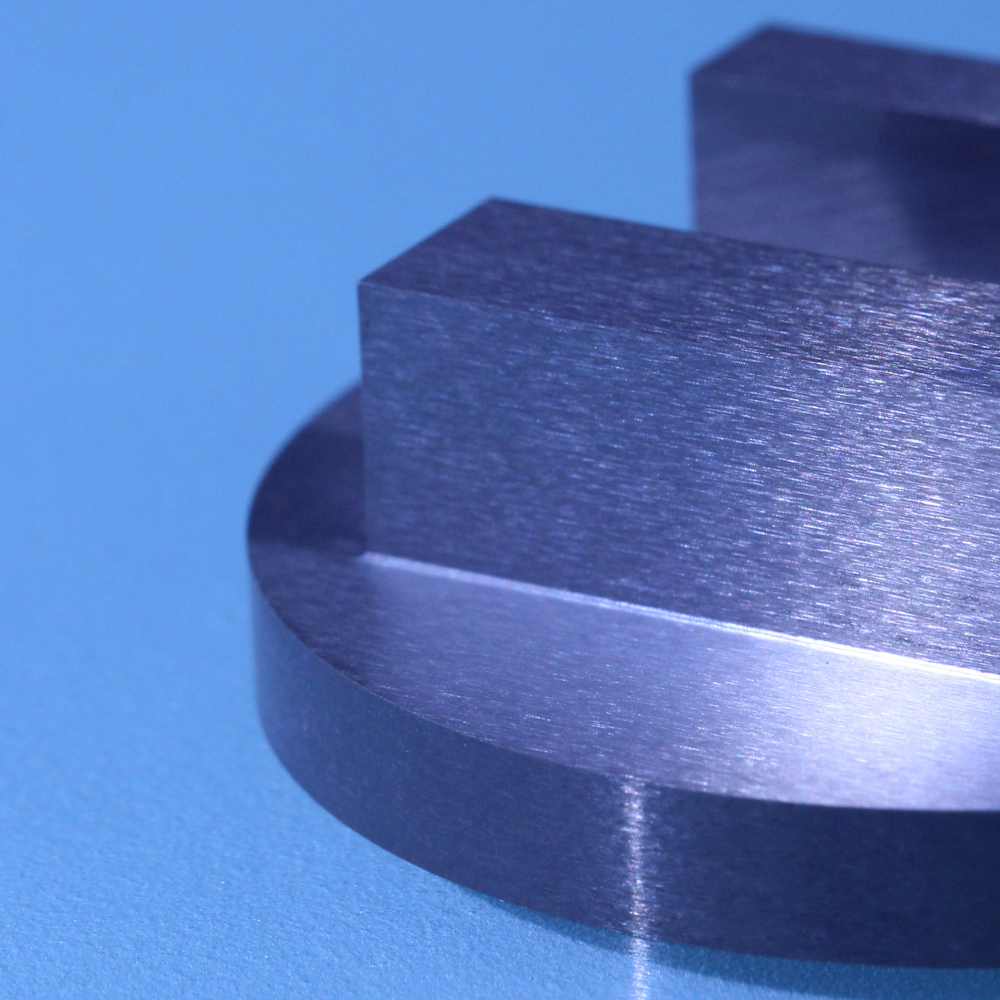1. Reaction sintering method (RS)
The general molding method is adopted. First, the silicon powder is pressed into a green body of the desired shape, and then placed in a nitriding furnace for pre-nitriding (partial nitriding) sintering treatment. The green body after pre-nitriding has a certain strength and can be Carry out various mechanical processing (such as turning, planing, milling, drilling) and finally, at the temperature above the melting point of silicon; the green body is again fully nitrided and sintered to obtain a product with little dimensional change (that is, after the green body is sintered, shrinkage The rate is very small, the linear shrinkage rate is < 011%) This product generally can be used without grinding. The reaction sintering method is suitable for the manufacture of parts with complex shapes and precise dimensions, and the cost is also low, but the nitriding time is very long.
Advantages of reactive sintered silicon nitride:
Manufacture of products with complex shapes without expensive machining and easy dimensional accuracy; no need to add sintering aids.

2. Hot pressing sintering method (HPS)
The Si3N4 powder and a small amount of additives (such as MgO, Al2O3, MgF2, Fe2O3, etc.) are hot-pressed and sintered at a pressure above 1916MPa and a temperature above 1600 ℃. The hot-pressed sintered Si3N4 ceramics used by some companies in the United Kingdom and the United States have a strength of more than 981MPa, and the additives and phase composition during sintering have a great impact on product performance. Due to the strict control of the composition of the grain boundary phase and proper heat treatment after the sintering of Si3N4 ceramics, it is possible to obtain Si3N4 series ceramic materials that do not significantly decrease in strength (up to 490MPa or more) even when the temperature is as high as 1300 °C, and the creep resistance Denaturation can be improved by three orders of magnitude. If the Si3N4 ceramic material is pre-oxidized at a high temperature of 1400-1500 ℃, the Si2N2O phase will be formed on the surface of the ceramic material, which can significantly improve the oxidation resistance and high temperature strength of the Si3N4 ceramics. The mechanical properties of Si3N4 ceramics produced by hot pressing sintering are superior to those of reaction sintering Si3N4, with high strength and high density. However, the manufacturing cost is high and the sintering equipment is complex. Due to the large shrinkage of the sintered body, the dimensional accuracy of the product is limited to a certain extent. It is difficult to manufacture complex parts. Only parts with simple shapes can be manufactured, and the machining of the workpiece is also difficult.
Advantages and disadvantages of hot pressing sintered silicon nitride:
Advantages: Products with high density and strength can be obtained.
Disadvantages: low production efficiency, high cost, simple product shape, difficult subsequent machining.

3. Atmospheric pressure sintering (PLS)
In terms of increasing the pressure of the sintering nitrogen atmosphere, the decomposition temperature of Si 3 N 4 is increased (usually at N2 = 1 atm, it starts to decompose from 1800 ℃), and after normal pressure sintering in the temperature range of 1700-1800 ℃, Gas pressure sintering is carried out in the temperature range of 1800-2000 °C. The purpose of this method is to use air pressure to promote the densification of Si3N4 ceramics, thereby increasing the strength of the ceramics. The properties of the resulting product are slightly lower than those of hot-pressing sintering, which has similar disadvantages to hot-pressing sintering.
4. Gas pressure sintering method (GPS)
In recent years, people have carried out a lot of research on gas pressure sintering, and have made great progress. Gas pressure sintering of silicon nitride is carried out at a temperature of about 2000°C under a pressure of 1-10 MPa, and high nitrogen pressure inhibits the high temperature decomposition of silicon nitride. Due to the use of high temperature sintering, the addition of less sintering aids is sufficient to promote the growth of Si3N4 grains, and a high-toughness ceramic containing in-situ growth of long columnar grains with a density of > 99% is obtained. Therefore, air pressure sintering has been paid more and more attention both in laboratory and in production. Gas pressure sintered silicon nitride ceramics have high toughness, high strength and good wear resistance, and can directly produce various complex shapes close to the final shape, which can greatly reduce production costs and processing costs. And its production process is close to the cemented carbide production process, which is suitable for mass production.
5. Heavy sintering (PS)
The reaction sintered Si3N4 sintered blank is placed in silicon nitride powder in the presence of a sintering aid, and re-sintered at high temperature to obtain a dense Si3N4 product. The sintering aid can be introduced during the ball milling of silicon powder, or it can be added by impregnation after reaction sintering by means of impregnation. Due to the prefabrication during the reaction sintering process, the shrinkage during the re-sintering process is only 6% to 10%, so parts with complex shapes and excellent performance can be prepared.
Advantages of heavy sintering:
Up to 99% density, comparable to hot-pressed Si3N4.
6. Hot isostatic pressing (HIP)
The mixture powder of silicon nitride and sintering aid is encapsulated in a metal or glass envelope, and sintered at high temperature by high pressure gas after vacuuming. The commonly used pressure is 200MPa and the temperature is 2000℃. Hot isostatic pressing of silicon nitride can reach the theoretical density, but its process is complicated and the cost is high.
